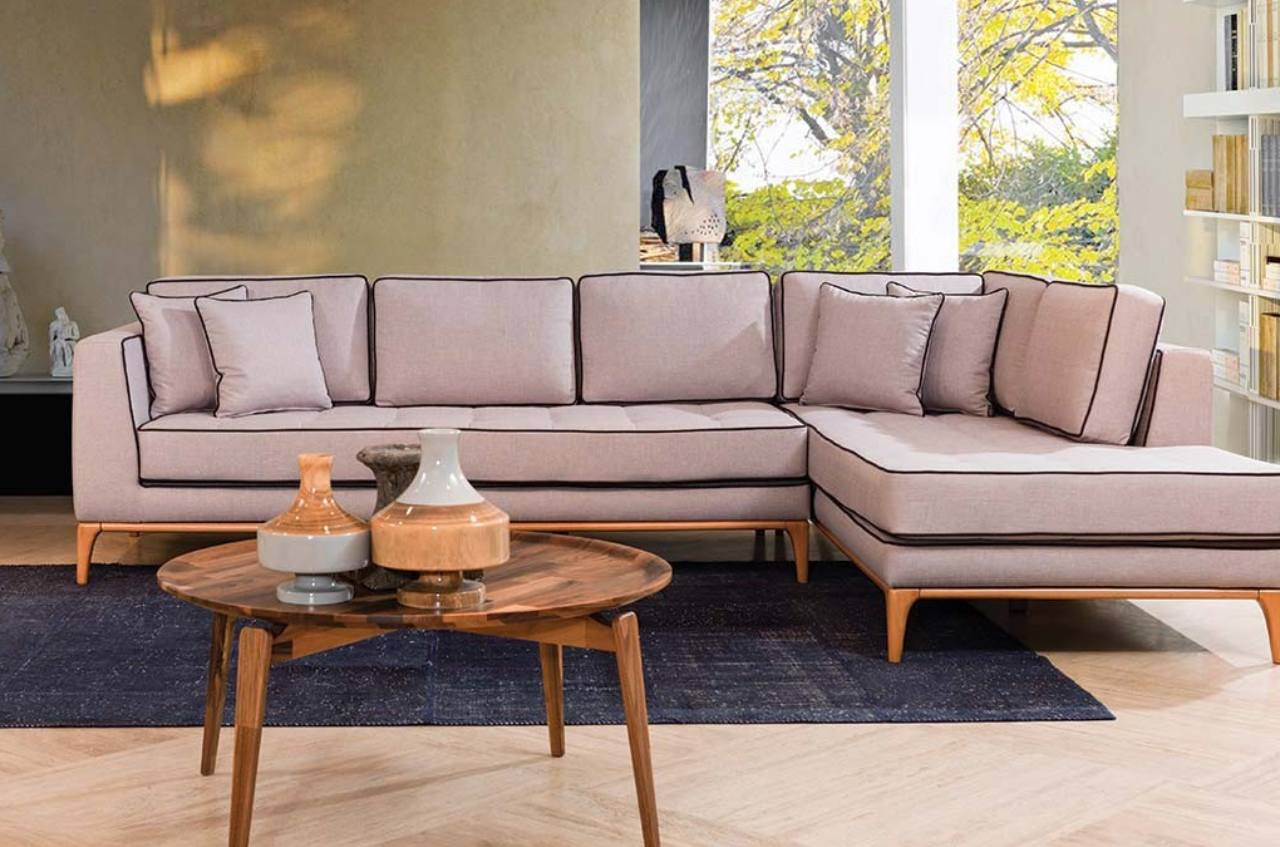The Evolution of Home Decoration in the 2000s
The 2000s witnessed significant developments in home decoration, driven primarily by the growing popularity of more comfortable and personalized living spaces. As people's lifestyles and perspectives on quality of life changed, so did the trends in decoration. One of the most notable changes was the merging of the concepts of living rooms and lounges. In this decade, home decor emphasized creating modern and functional spaces, offering a range of inspiring touches and customizable ideas for successful solutions in your own living area.

The Rise of Multi-Functional Rooms
In the past, dining rooms, lounges, and living rooms were often separate in some homes, while in others, the dining room and lounge were combined. With many homes lacking sufficient space, having separate areas for a lounge and living room became less common in the 2000s. The increase in home office work and the desire for personal time and hobbies led to a preference for more usable spaces, often resulting in previously closed-off lounges becoming more functional.

The Open Kitchen Trend
One of the most significant changes in home designs during the 2000s was the adoption of open kitchens. Open kitchens are particularly popular in smaller, functional homes designed for two-person families or single residents. During this period, the concepts of built-in appliances and metallic colors became strongly established in decoration trends. Open kitchens, with their beautiful designs, quickly became areas that everyone enjoyed using, featuring kitchen islands and bar stools that created inviting and stylish dining spaces.
Emphasis on Spaciousness
In the early 2000s, many home designs underwent significant changes, with a focus on creating more spacious and functional areas. Features like master bathrooms became more preferred than having separate living rooms and lounges, leading to an increase in room areas and usage options. As comfort-oriented spaces like dressing rooms and saunas became more popular, larger living rooms evolved to accommodate seating, entertaining guests, and dining in connection with open kitchens. These changes allowed for successful arrangements that facilitated transitions based on the usage of the space.
Natural Living
The most beautiful home decorations of the 2000s were characterized by natural elements. The green living trend began to affect every aspect of human life, influencing home decor as well. The frequent use of natural materials like metal, wood, and glass, along with the inclusion of live plants, became common in home decor. While natural plants were primarily used in gardens and balconies before the 2000s, their presence in interior decor has significantly increased over the past 15 years.

Creative Details
The 2000s also brought radical changes in furniture design. The most beautiful home decorations combined functional and comfortable details, leading to the introduction of highly functional furniture. This shift meant that even the smallest homes could become more usable, gaining popularity among homeowners. Instead of just sofa beds, designs that functioned as both bookshelves and sofas became more common during the 2000s, as furniture began to offer successful solutions for storage and sleeping.

The Rise of Comfortable Spaces
In the past, the appearance of furniture was more important than comfort, but the 2000s saw a shift towards prioritizing comfort. The demand for comfort in furniture transformed people's habits. Instead of wanting to see flashy furniture upon entering a room, individuals now sought comfortable pieces that made them reluctant to get up once seated. As demands shifted, furniture designs evolved to offer broader and more comfortable options. Today, you can find comfortable furniture in various styles, including retro, avant-garde, and minimal.

The Play of Colors
The most beautiful home decorations have always been those that feel alive. Regardless of the decor style, achieving a unique and creative living space became a trend in the 2000s. Bold use of colors and the creation of comfortable, functional areas emerged as beautiful elements that entered our lives over the past 15 years.

Misconceptions About Colors
As interest in neutral colors grew, darker shades began to be used more frequently in bedrooms. The belief that bedrooms should be bright and airy was challenged as people's work and sleep patterns changed. Today, decoration trends that allow for quality sleep at any hour are prominent, resulting in the most beautiful home decorations featuring color transitions between rooms, rather than being limited to a single tone throughout the house.

Changes in Apartment Designs
The rise in popularity of loft apartments has led to exciting decoration projects in these spacious and modern designs. The success of lofts in providing cohesive decor, whether minimal, modern, or ethnic, made them some of the most popular designs of the 2000s.

Highlighted Kitchens
For many people, the most beautiful home decorations are associated with kitchens. Typically perceived as standard and entirely functional, kitchen decor didn't receive much attention. However, the rise of open kitchens in the 2000s brought significant importance to kitchen decoration. Kitchens featuring extensive use of glass, wood, and metal became spaces not only for cooking but also for enjoying time spent together.

Adding Layers to Living Spaces
One of the most significant changes in decoration trends over the past 15-20 years has been the creation of layers in decor. Layered decorations using various textures and styles garnered great interest. The most beautiful home decorations often involve the use of different textures, such as velvet, leather, and metal. The key reason for this is that different materials provide a deeper and richer appearance, effectively eliminating monotony.






